Japandi is a style that, if not taking the world by storm, is gently introducing itself to the interior design scene and quietly transforming rooms.
We had a look at what Japandi is but here we wanted to get visual and demonstrate just what you can do to a space with this design style.
If you want to create a calming, cosy room that is easy on the eye then Japandi might well be the look you’ve been searching for.
Wood and Concrete Combination
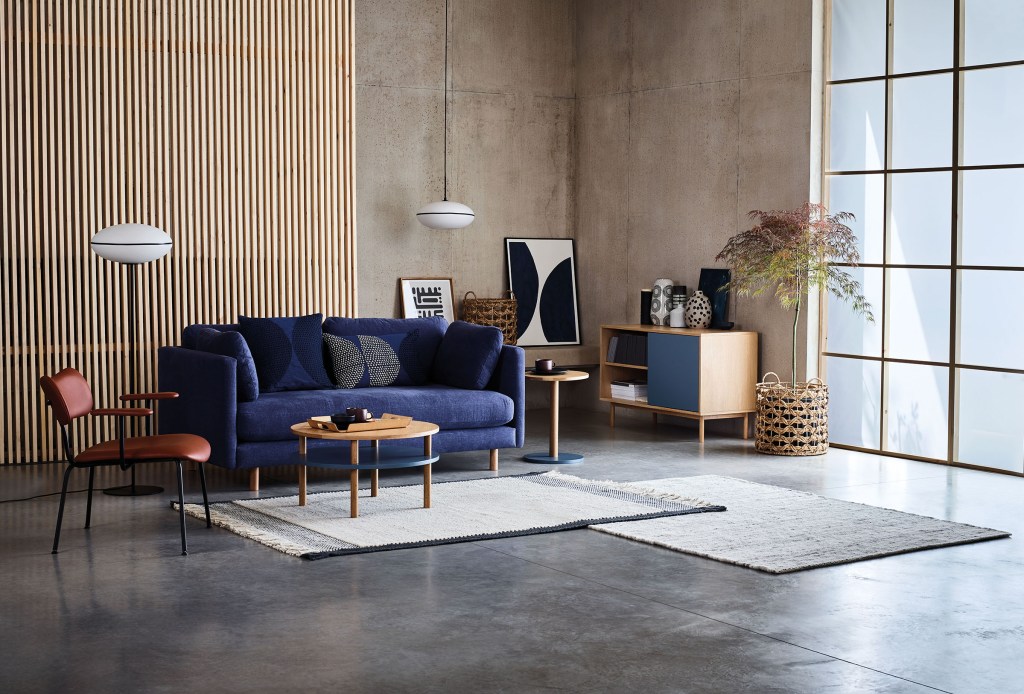
Now concrete might not jump out as an environmentally conscious material, but I believe it’s somewhat mis-maligned. It’s not perfect, but its longevity means that it will outlast a lot of other materials that might have been used in its place.
Anyway, apart from the digression, this gorgeous concrete and wood room demonstrates the kind of simple, clean lines and muted palette that are the hallmarks of a Japandi style space.
We love the little homage to Japanese horticulture with the feathery Acer tree in a wicker basket.
Plywood and Wicker Furniture
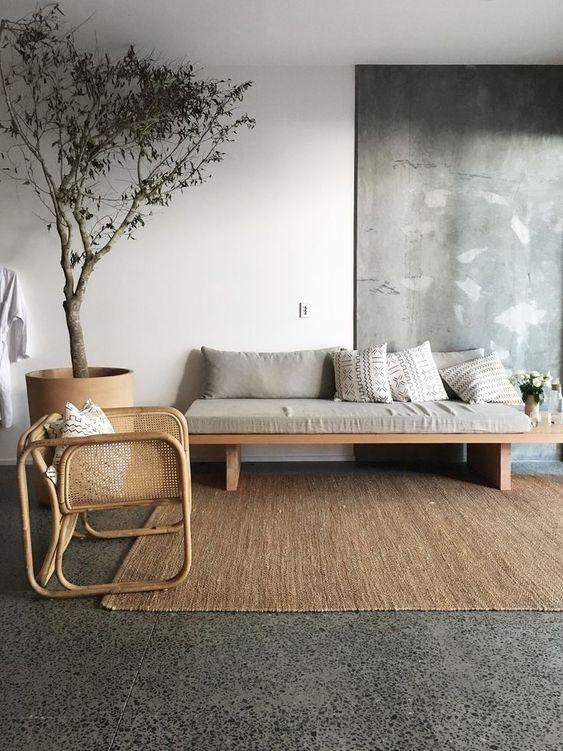
Two materials that are right at home in a Japandi design are plywood and wicker. They fit neatly into the natural, simple, inexpensive materials that are a part of both Japanese and Scandi design.
The stunning cylindrical plywood planter in this room somehow manages to stand out and blend in all at the same time…or maybe it’s just my obsession with plywood?
Wicker and cane furniture is making a big comeback from the seventies, if it ever really went away.
Yet again, we have a concrete floor here, I can only apologise for what might become a regular feature in this article.
Comfy Furniture, Plants, Interesting Wall Art
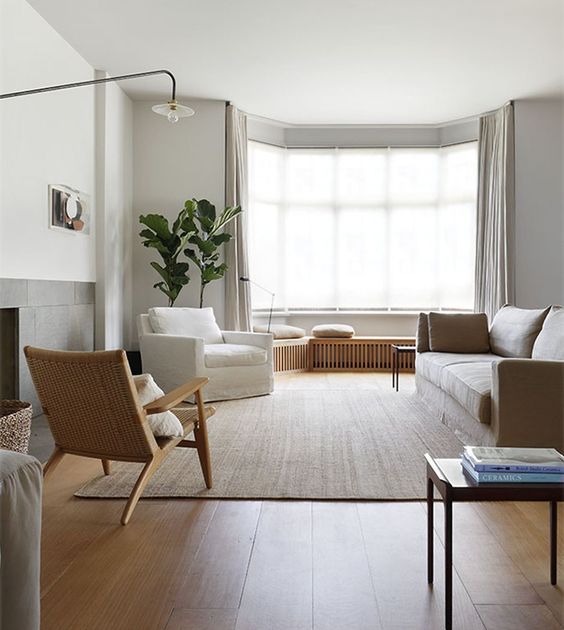
Sometimes, a seemingly complex design philosophy can be summed up in three pieces. This very simple room does just that with comfy seats, some fiddle leaf fig plants in the corner and a perspex-encased, avant-garde work of art on the wall.
Although, the amazingly crafted window seat-come radiator cover in the bay window is another perfect addition to the Japandi style.
There are concrete effect tiles around the fireplace in case you thought we’d forgotten!
Dark Colours and a Japandi Chair
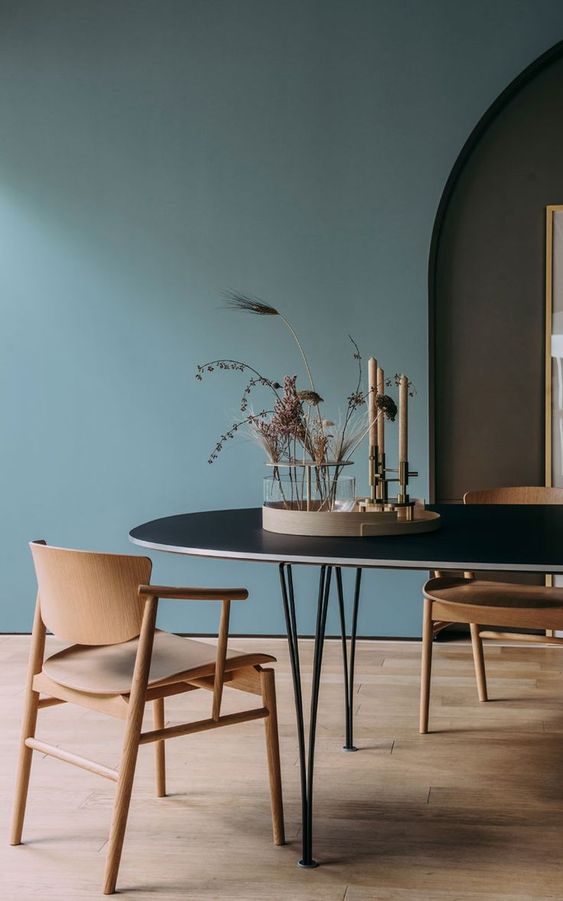
It’s not only light, muted colours that can be used in a Japandi scheme. Darker colours are more synonymous with Japanese design and are a popular choice in many homes right now.
They work so well with bare wood furniture, or any element that displays wood grain. The No. 1 chair from Fritz Hansen in this room is a perfect fit. It is, in fact, a Japandi chair, having been created by a Japanese designer for a Danish design house.
A simple thin black table top with hairpin legs is a great way to make the chairs the stars of the show.
Messy Means Cosy
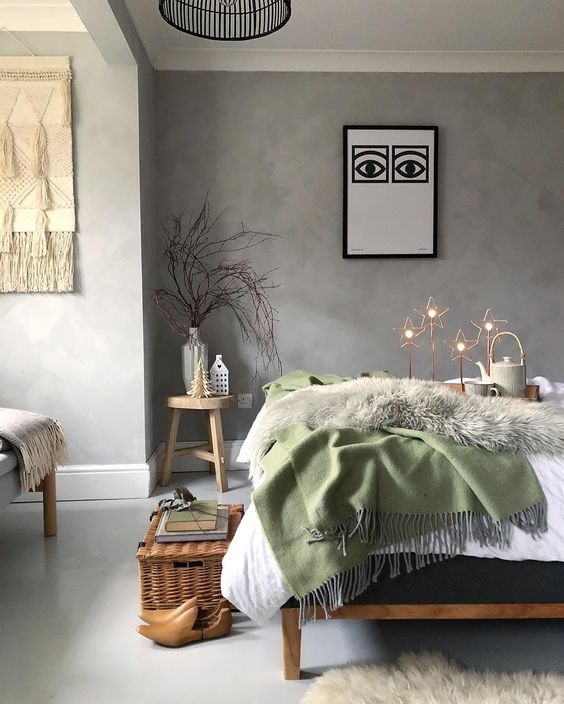
I don’t like to be too fussy about design specifics. If you want to go rogue, you go for it! Japandi is mostly about sleek lines and minimalism, but it’s also about that hygge. Get messy if it adds a bit of cosiness! Especially with some beautiful faux fur and cashmere!
The macrame art on the wall in this room is just the kind of thing that works well in a Japandi space. If you’re crafty, these can be made yourself, otherwise Etsy has some stunning examples.
I have to mention the concrete paint effect on the walls. Inspired!
Well Crafted Screen Doors
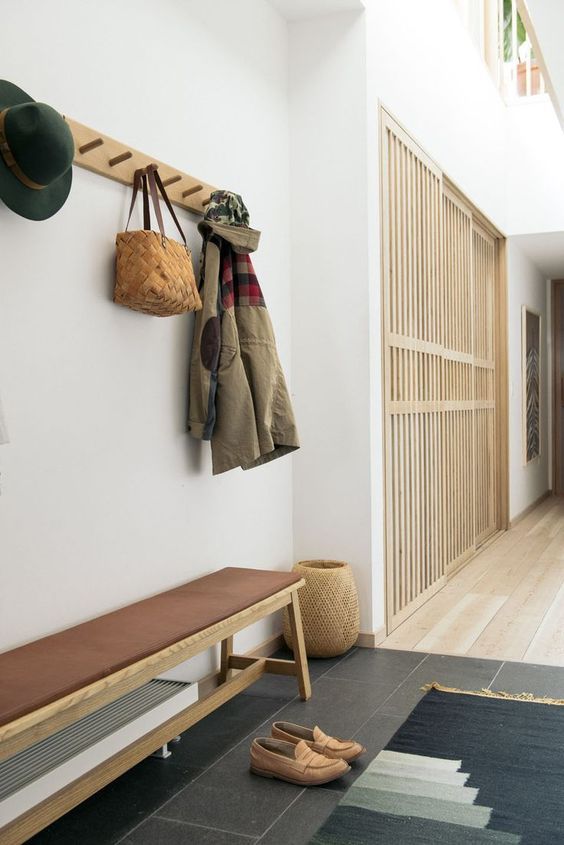
Craftsmanship is a big part of the Japandi style and creating stunning wooden screen doors like these ties in well with both the craftsmanship element and the link to Japanese design.
You don’t have to go as far as commissioning doors as amazing as these, you could even use room divider screens as a compromise.
This hallway does highlight one thing about Japandi design that you need to be careful with. Everything is on display. Everything becomes a part of the room. Even your coats on a coat rack.
Don’t be scared to try designing a Japandi room in your home. It’s really quite simple. Think of cosy soft furnishings, well crafted furniture and a muted palette.
Add in some interesting accessories, but make sure they have a purpose in the room.
If you’ve never tried out minimalism, this might be a good way to introduce yourself while keeping a bit of style!
